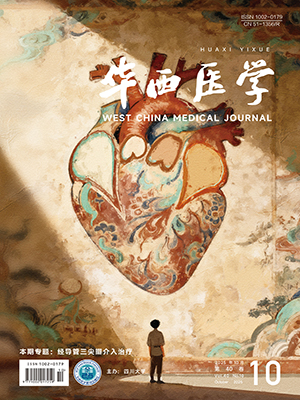| 1. |
许樟荣.糖尿病足与周围动脉闭塞性病变[J].国外医学.内分泌学分册,2004,24(5):312-314..
|
| 2. |
Belch JJ,Topol EJ,Agnelli G,et al.Critical issues in peripheral arterial disease detection and management:a call to action[J].Arch Intern Med,2003,163(8):884-92..
|
| 3. |
Fowkes FG.The measurement of atherosclerotic peripheral after’iai disease and epidemiological surveys[J].Int J Epidemiol,1988,17(2):248..
|
| 4. |
TemelkovaKurktschiev TS,Koehler C,Henkel E,et al.Postchailenge plasma glucose and glyeemic spikes are more strongly associated with atheroselerosis than fasting glucose or HbA1c level[J].Diabetes Care,2000,23(12):1830..
|
| 5. |
The DECODE Study Group.European Diabetes Epidemiology Group.Glucose Tolerance and mortality:comparison of’WHO and American Diabetes Association diagnosis criteria[J].Lancet,1999,354(9179):617..
|
| 6. |
Zander E,Heinke P,Reindel J,et al.Peripheral arterial disease in diabetes mellitus type 1 and type 2:are there different risk factors[J].Vasa,2002,31(4):249-54..
|
| 7. |
王一尘,段俊丽.脉压与心脑血管事件发生关系的研究[J].中国综合临床,2004,20(1):21-3..
|
| 8. |
Doobay AV,Anand SS,et al.Sensitivity and specificity of the anklebrachial index to predict future cardiovascular outcomes:a systematic review[J].Thrombosis & Vascular Biology,2005,25(7):1463-469..
|
| 9. |
Diehm C,Allenberg JR,Pittrow D,et al.Importance of the anklebrachial index(ABI)in the prevention of cardiovascular diseases.Ten questions and answers[J].Herz,2007,32(5):404-09..
|
| 10. |
Heald CL,Fowkes FG,Murray GD,et al.Ankle Brachial Index Collaboration.Risk of mortality and cardiovascular disease associated with the anklebrachial index:Systematic review[J].Atherosclerosis,2006,189(1):61-69.
|
| 11. |
Bonham PA.Get the LEAD out:noninvasive assessment for lower extremity arterial disease using ankle brachial index and toe brachial index measurements[J].Journal of Wound,Ostomy,& Continence Nursing,2006,33(1):30-41.
|




